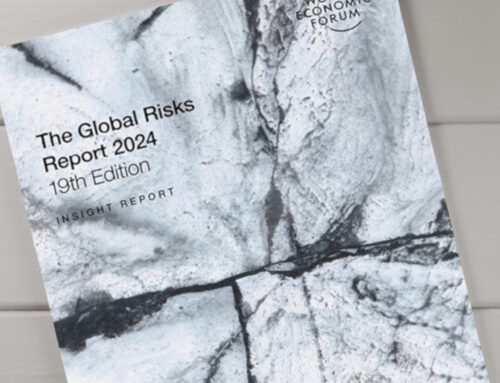

NAIC Fall National Meeting Recap
Share this
Government & Regulatory Relations (GRR) recently attended the National Association of Insurance Commissioners (NAIC) Fall National Meeting in Orlando, Florida.
Members of the Zurich GRR Team had a busy and productive week in Orlando. GRR Team members engaged with state regulators from across the country on issues such as Artificial Intelligence (AI), privacy protections, climate resiliency and sustainability, solvency, and other issues of importance to our business. Team members met with Commissioners Michael Humphreys (PA), Kathleen Birrane (MD), and Doug Ommen (ID), as well as delegations from Connecticut, Georgia, and Kansas.
The GRR team obtained an invitation for ZNA’s Chief Data & Analytics Officer, Jane Rheem to attend a regulator-only, closed-door meeting on AI governance, where she discussed the current state of AI in the market, as well as ZNA’s current and planned use of AI, including our governance model, ethical considerations when using AI, and our data sourcing and governance. Regulators were noticeably engaged with Ms. Rheem’s presentation, with many asking questions and taking notes. Following the presentation, the GRR Team received overwhelmingly positive feedback from the commissioners in attendance. The rare invite from Maryland Commissioner Birrane to speak to regulators in a closed-door meeting is evidence of Zurich’s position as a thought leader in AI and the insurance market.
As is usually the case at the Fall National Meetings, the NAIC membership elected the next slate of officers. Rhode Island Superintendent Beth Dwyer was elected NAIC Secretary Treasurer, and will join Connecticut Commissioner and incoming NAIC President Andrew Mais, North Dakota Commissioner and NAIC President-Elect Jon Godfread, and Virginia Commissioner and NAIC Vice-President, Scott White as the NAIC’s officers for 2024. Additionally, NAIC bid farewell to long-standing consumer advocate Birny Birnbaum of the Center for Economic Justice as he announced his retirement. Mr. Birnbaum first served as a regulator then as a consumer advocate for the past 24 years.
Below is a recap of some of the major issues discussed over the course of the meeting.
Innovation, Technology, and Cybersecurity
After several months of work, the Innovation, Cybersecurity & Technology (H) Committee adopted the draft model bulletin on insurers’ use of algorithms, predictive models, and artificial intelligence (AI) systems. The model AI Bulletin is intended to be used by state departments of insurance to remind insurers that decisions impacting consumers that are made or supported by advanced analytical and computational technologies, including AI systems, must comply with all applicable insurance laws and regulations. While we can expect states to begin adopting the model in some form, there remains some concern about the definition of the word “bias”. The GRR Team will continue to work with our trades and individual states as the Bulletin is considered for adoption and we will influence positive change where it is possible.
The Big Data and Artificial Intelligence Working Group provided a summary of the results of the Artificial Intelligence/Machine Learning (AI/ML) Life Insurance Survey and how the results compared with the earlier personal auto insurance and homeowners insurance surveys. ZNA participated in the AI/ML Survey for Homeowners and Life. The Working Group discussed potential next steps, including: more discussion of governance and data elements, evaluation of the regulatory framework especially for third-party vendors, determining if additional whitepapers are needed, exploring the use of AI and ML at the product level, and continuing further closed-door meetings with the industry. There was no discussion of the proposed AI Model Regulatory questions that took front stage at the Spring National Meeting.
The Privacy Protections Working Group met to discuss the continued work on the draft Consumer Privacy Protections Model Law (# 674). The Working Group provided an Updated Work Plan for moving forward with the draft Model. The Work Plan has been revised to provide an extension of time until the 2024 Fall National Meeting. This matter remains a key NAIC priority. The GRR Team will remain engaged with this Working Group as they work through the development of the new model law.
As part of its 2024 charges, the Innovation, Cybersecurity & Technology (H) Committee created a new task force on third-party vendors. This continues to be a significant issue for regulators and industry as both parties work to avoid barriers to the use of third- party vendors but also how to satisfy regulatory concerns. The GRR Team will be engaged with the new task force as soon as it is functional in 2024.
Climate Resiliency and Sustainability
The Climate and Resiliency Task Force discussed and adopted the NAIC National Climate Resilience Strategy for Insurance. The Strategy includes a roadmap for reducing the protection gaps caused by climate change and catastrophes, creating a new footprint for expanding flood insurance options, analyzing insurer actions (e.g., withdrawal from the market), and coordinating efforts for states to adopt mitigation tools and resources. While the Strategy was adopted by the Task Force, it was not sent to the Executive Committee and Plenary for formal NAIC adoption. There will be more to come on this issue.
Solvency
The Financial Condition Committee, again, discussed and heard comments on the proposed Framework for Insurer Investment Regulation. The Framework proposes seven initiatives aimed at increasing oversight of rating agencies that are “credit rating providers” (CRPs) recognized by the NAIC, shifting the focus of the NAIC’s Securities Valuation Office (SVO) from individual investment credit assessment to portfolio risk analysis, enhancing structured asset modeling capabilities, building a broad policy advisory function at the SVO, and creating a confidential regulator investment working group similar to the current Financial Analysis (E) Working Group. The proposal involves substantial use of external consultants and presumably significant NAIC resources. The proposed Framework appears to be a significant initiative primarily directed at the life insurance industry. The Committee will likely issue a document in January for public comment and will hold a series of calls on each of the Framework’s seven recommendations in 2024.
Property Data Call
At the Summer National meeting in August, the Property and Casualty Insurance Committee announced the intent to issue a data call focused on finding information about the affordability and availability of property insurance. Since August, the Committee has been working to develop the data call. During the Committee meeting in Orlando, the committee chair summarized the status of the property data call, stating drafting is nearly complete, individual states will begin to volunteer to be the conduits for the data call, and (without giving a specific date) said companies should soon receive it. The chair also indicated that the NAIC is still seeking to work with FIO on the data call issue but remains determined to go forward with its own effort. While the current data call excludes commercial property it is not clear whether ZNA’s small book of homeowners business will meet the size threshold for recipients. The ZNA GRR Team will work to keep the scope of the data call limited to just large homeowners insurers and not expand to include commercial property.
Discussions with state regulators across the country will continue at NAIC’s next meeting in the Spring of 2024 to be held in Phoenix, Arizona.
Learn more about Zurich North America-Government and Regulatory Relations’ top priorities here.
By David Combs

Assistant Vice President, Regulatory Affairs
NAIC Fall National Meeting Recap
Share this
Government & Regulatory Relations (GRR) recently attended the National Association of Insurance Commissioners (NAIC) Fall National Meeting in Orlando, Florida.
Members of the Zurich GRR Team had a busy and productive week in Orlando. GRR Team members engaged with state regulators from across the country on issues such as Artificial Intelligence (AI), privacy protections, climate resiliency and sustainability, solvency, and other issues of importance to our business. Team members met with Commissioners Michael Humphreys (PA), Kathleen Birrane (MD), and Doug Ommen (ID), as well as delegations from Connecticut, Georgia, and Kansas.
The GRR team obtained an invitation for ZNA’s Chief Data & Analytics Officer, Jane Rheem to attend a regulator-only, closed-door meeting on AI governance, where she discussed the current state of AI in the market, as well as ZNA’s current and planned use of AI, including our governance model, ethical considerations when using AI, and our data sourcing and governance. Regulators were noticeably engaged with Ms. Rheem’s presentation, with many asking questions and taking notes. Following the presentation, the GRR Team received overwhelmingly positive feedback from the commissioners in attendance. The rare invite from Maryland Commissioner Birrane to speak to regulators in a closed-door meeting is evidence of Zurich’s position as a thought leader in AI and the insurance market.
As is usually the case at the Fall National Meetings, the NAIC membership elected the next slate of officers. Rhode Island Superintendent Beth Dwyer was elected NAIC Secretary Treasurer, and will join Connecticut Commissioner and incoming NAIC President Andrew Mais, North Dakota Commissioner and NAIC President-Elect Jon Godfread, and Virginia Commissioner and NAIC Vice-President, Scott White as the NAIC’s officers for 2024. Additionally, NAIC bid farewell to long-standing consumer advocate Birny Birnbaum of the Center for Economic Justice as he announced his retirement. Mr. Birnbaum first served as a regulator then as a consumer advocate for the past 24 years.
Below is a recap of some of the major issues discussed over the course of the meeting.
Innovation, Technology, and Cybersecurity
After several months of work, the Innovation, Cybersecurity & Technology (H) Committee adopted the draft model bulletin on insurers’ use of algorithms, predictive models, and artificial intelligence (AI) systems. The model AI Bulletin is intended to be used by state departments of insurance to remind insurers that decisions impacting consumers that are made or supported by advanced analytical and computational technologies, including AI systems, must comply with all applicable insurance laws and regulations. While we can expect states to begin adopting the model in some form, there remains some concern about the definition of the word “bias”. The GRR Team will continue to work with our trades and individual states as the Bulletin is considered for adoption and we will influence positive change where it is possible.
The Big Data and Artificial Intelligence Working Group provided a summary of the results of the Artificial Intelligence/Machine Learning (AI/ML) Life Insurance Survey and how the results compared with the earlier personal auto insurance and homeowners insurance surveys. ZNA participated in the AI/ML Survey for Homeowners and Life. The Working Group discussed potential next steps, including: more discussion of governance and data elements, evaluation of the regulatory framework especially for third-party vendors, determining if additional whitepapers are needed, exploring the use of AI and ML at the product level, and continuing further closed-door meetings with the industry. There was no discussion of the proposed AI Model Regulatory questions that took front stage at the Spring National Meeting.
The Privacy Protections Working Group met to discuss the continued work on the draft Consumer Privacy Protections Model Law (# 674). The Working Group provided an Updated Work Plan for moving forward with the draft Model. The Work Plan has been revised to provide an extension of time until the 2024 Fall National Meeting. This matter remains a key NAIC priority. The GRR Team will remain engaged with this Working Group as they work through the development of the new model law.
As part of its 2024 charges, the Innovation, Cybersecurity & Technology (H) Committee created a new task force on third-party vendors. This continues to be a significant issue for regulators and industry as both parties work to avoid barriers to the use of third- party vendors but also how to satisfy regulatory concerns. The GRR Team will be engaged with the new task force as soon as it is functional in 2024.
Climate Resiliency and Sustainability
The Climate and Resiliency Task Force discussed and adopted the NAIC National Climate Resilience Strategy for Insurance. The Strategy includes a roadmap for reducing the protection gaps caused by climate change and catastrophes, creating a new footprint for expanding flood insurance options, analyzing insurer actions (e.g., withdrawal from the market), and coordinating efforts for states to adopt mitigation tools and resources. While the Strategy was adopted by the Task Force, it was not sent to the Executive Committee and Plenary for formal NAIC adoption. There will be more to come on this issue.
Solvency
The Financial Condition Committee, again, discussed and heard comments on the proposed Framework for Insurer Investment Regulation. The Framework proposes seven initiatives aimed at increasing oversight of rating agencies that are “credit rating providers” (CRPs) recognized by the NAIC, shifting the focus of the NAIC’s Securities Valuation Office (SVO) from individual investment credit assessment to portfolio risk analysis, enhancing structured asset modeling capabilities, building a broad policy advisory function at the SVO, and creating a confidential regulator investment working group similar to the current Financial Analysis (E) Working Group. The proposal involves substantial use of external consultants and presumably significant NAIC resources. The proposed Framework appears to be a significant initiative primarily directed at the life insurance industry. The Committee will likely issue a document in January for public comment and will hold a series of calls on each of the Framework’s seven recommendations in 2024.
Property Data Call
At the Summer National meeting in August, the Property and Casualty Insurance Committee announced the intent to issue a data call focused on finding information about the affordability and availability of property insurance. Since August, the Committee has been working to develop the data call. During the Committee meeting in Orlando, the committee chair summarized the status of the property data call, stating drafting is nearly complete, individual states will begin to volunteer to be the conduits for the data call, and (without giving a specific date) said companies should soon receive it. The chair also indicated that the NAIC is still seeking to work with FIO on the data call issue but remains determined to go forward with its own effort. While the current data call excludes commercial property it is not clear whether ZNA’s small book of homeowners business will meet the size threshold for recipients. The ZNA GRR Team will work to keep the scope of the data call limited to just large homeowners insurers and not expand to include commercial property.
Discussions with state regulators across the country will continue at NAIC’s next meeting in the Spring of 2024 to be held in Phoenix, Arizona.
Learn more about Zurich North America-Government and Regulatory Relations’ top priorities here.
By David Combs

Assistant Vice President, Regulatory Affairs



